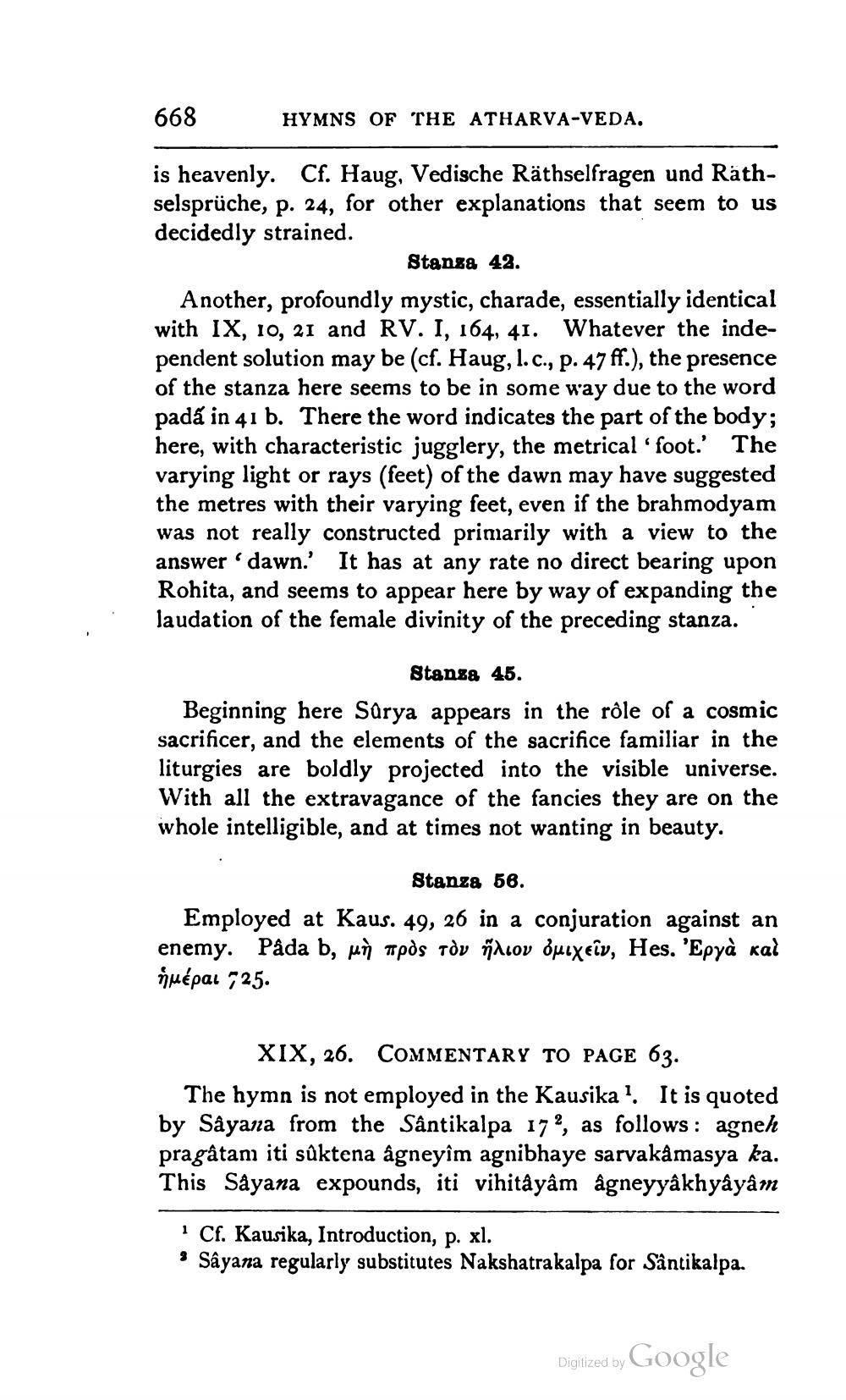________________
668
HYMNS OF THE ATHARVA-VEDA.
is heavenly. Cf. Haug, Vedische Räthselfragen und Räthselsprüche, p. 24, for other explanations that seem to us decidedly strained.
Stansa 42. Another, profoundly mystic, charade, essentially identical with IX, 10, 21 and RV. I, 164, 41. Whatever the independent solution may be (cf. Haug, l. c., p. 47 ff.), the presence of the stanza here seems to be in some way due to the word padá in 41 b. There the word indicates the part of the body; here, with characteristic jugglery, the metrical.foot.' The varying light or rays (feet) of the dawn may have suggested the metres with their varying feet, even if the brahmodyam was not really constructed primarily with a view to the answer' dawn.' It has at any rate no direct bearing upon Rohita, and seems to appear here by way of expanding the laudation of the female divinity of the preceding stanza.
Stanse 45.
Beginning here Sarya appears in the role of a cosmic sacrificer, and the elements of the sacrifice familiar in the liturgies are boldly projected into the visible universe. With all the extravagance of the fancies they are on the whole intelligible, and at times not wanting in beauty.
Stanza 56. Employed at Kaus. 49, 26 in a conjuration against an enemy. Påda b, un tpos töv ñdcov quixeiv, Hes. 'Epyà xal quépal 725.
XIX, 26. COMMENTARY TO PAGE 63. The hymn is not employed in the Kausika ?. It is quoted by Sayana from the Sântikalpa 17?, as follows: agneh pragâtanı iti sûktena âgneyîm agnibhaye sarvakåmasya ka. This Såyana expounds, iti vihitâyâm âgneyyâkhyâyâm
Cf. Kausika, Introduction, p. xl. • Sâyana regularly substitutes Nakshatrakalpa for Såntikalpa.
Digitized by Google




